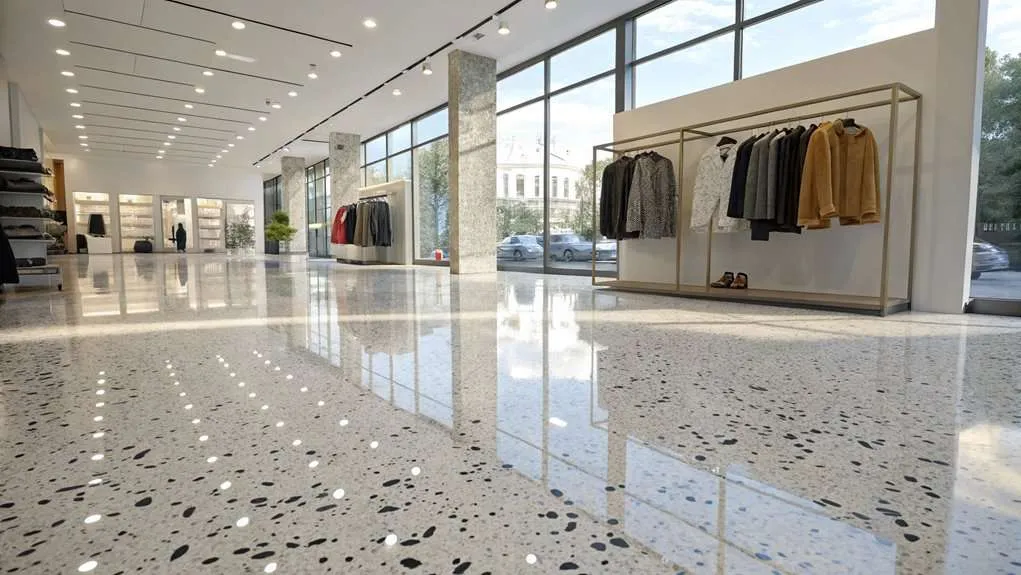Manufacturing plants, commercial kitchens, and industrial facilities face a common challenge: finding flooring that can withstand extreme conditions while maintaining safety and performance standards. Traditional concrete floors crack under pressure, epoxy coatings chip away over time, and standard tiles create maintenance nightmares in high-traffic areas.
Urethane cement flooring has emerged as the solution that facility managers and architects have been seeking. This advanced flooring system combines the durability of concrete with the flexibility of urethane, creating surfaces that excel in the most demanding environments. From food processing plants operating around the clock to pharmaceutical facilities requiring sterile conditions, urethane cement floors deliver unmatched performance where other materials fail.
The technology behind urethane cement flooring represents a significant leap forward in industrial flooring solutions. Unlike traditional options that force you to choose between durability and functionality, this innovative material provides both without compromise.
The Science Behind Superior Performance
Urethane cement flooring owes its exceptional properties to a unique chemical composition that sets it apart from conventional flooring materials. The system consists of urethane resins combined with specially graded aggregates and Portland cement, creating a matrix that delivers remarkable strength and flexibility.
This combination produces flooring with compressive strength exceeding 8,000 PSI while maintaining the flexibility to absorb impact and thermal shock. The result is a surface that won’t crack under heavy machinery or extreme temperature fluctuations that would destroy other flooring types.
The polymerization process creates a seamless surface with superior bond strength to concrete substrates. This eliminates the weak points found in tile systems and prevents the delamination issues common with thin coating applications.
Unmatched Durability in Extreme Conditions
Temperature Resistance That Exceeds Expectations
Urethane cement flooring thrives in environments where temperature extremes would compromise other materials. These floors maintain their integrity in temperatures ranging from -40°F to 300°F, making them ideal for freezer rooms, steam cleaning areas, and facilities with dramatic temperature variations.
Hot grease spills that would permanently damage epoxy floors wash away easily from urethane cement surfaces. Steam cleaning at 180°F poses no threat to the floor’s structural integrity or surface finish.
Chemical and Stain Resistance
The dense, non-porous surface of urethane cement flooring resists a wide range of chemicals, oils, and organic acids. Food processing facilities benefit from floors that won’t absorb fruit acids, dairy products, or cleaning solutions. Manufacturing plants appreciate surfaces that shrug off hydraulic fluids, solvents, and industrial chemicals.
This chemical resistance extends the floor’s lifespan significantly while reducing maintenance costs and downtime for deep cleaning or repairs.
Safety Features That Protect Your Team
Slip resistance ranks among the top concerns for facility managers, and urethane cement flooring delivers exceptional traction even when wet. The textured surface options provide reliable grip for workers while remaining smooth enough for easy cleaning and equipment movement.
Unlike tiles with grout lines that collect debris and create trip hazards, urethane cement floors offer seamless surfaces that eliminate these safety risks. The slight flexibility of the material also reduces fatigue for workers who stand for long periods.
The antimicrobial properties inherent in properly formulated urethane cement systems help maintain hygienic conditions in food service and healthcare applications without requiring additional treatments.
Installation Advantages That Minimize Disruption
Fast cure times mean facilities can return to full operation quickly after installation. While traditional concrete floors require weeks to fully cure, urethane cement floors can handle light traffic within hours and full loading within 24-48 hours.
The material bonds directly to properly prepared concrete substrates without requiring primers or complex surface preparation. This streamlined installation process reduces labor costs and project timelines.
Repairs and patches blend seamlessly with existing floors, eliminating the patchwork appearance common with other flooring systems. This capability extends the practical life of the floor while maintaining aesthetic appeal.
Cost-Effectiveness Over the Long Term
Initial installation costs for urethane cement flooring often exceed basic concrete or epoxy options, but the total cost of ownership tells a different story. The extended lifespan, minimal maintenance requirements, and resistance to damage create significant savings over time.
Facilities report dramatic reductions in cleaning time due to the non-porous surface that resists staining and harboring contaminants. Equipment movement becomes easier on the smooth yet slip-resistant surface, improving operational efficiency.
The ability to withstand heavy traffic without showing wear means these floors maintain their professional appearance for years without requiring refinishing or replacement sections.
Applications Across Industries
Food and Beverage Processing
Urethane cement flooring excels in environments requiring frequent washdowns and exposure to organic acids. The seamless surface prevents bacterial growth while withstanding the thermal shock of hot water cleaning systems.
Pharmaceutical Manufacturing
Clean room requirements and chemical resistance make urethane cement an ideal choice for pharmaceutical facilities. The floors contribute to maintaining sterile environments while providing the durability needed for heavy equipment.
Cold Storage Facilities
The thermal flexibility prevents cracking in freezer environments where other floors fail. Forklift traffic and temperature cycling pose no threat to properly installed urethane cement floors.
Manufacturing Plants
Heavy machinery, chemical exposure, and high traffic volumes demand flooring that won’t compromise under pressure. Urethane cement floors provide the foundation for reliable operations.
Making the Smart Choice for Your Facility
Urethane cement flooring is more than just another flooring option—it’s an investment in operational efficiency, safety, and long-term cost control. Facilities that have made the transition consistently report improved working conditions, reduced maintenance expenses, and enhanced productivity.
The combination of durability, safety features, and low maintenance requirements makes urethane cement flooring the intelligent choice for demanding applications. When your facility’s operations depend on reliable flooring performance, choosing a system that won’t let you down becomes critical to your success.
Consider conducting a cost-benefit analysis comparing your current flooring maintenance and replacement costs with the long-term value of urethane cement flooring. Most facilities discover that the superior performance and extended lifespan create compelling financial advantages that justify the investment.

